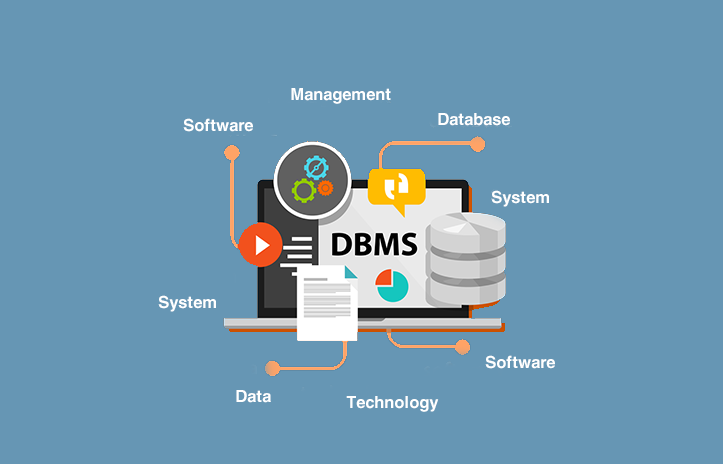DBMS Article Series: An In-Depth Journey into Databases
 ritiksharmaaa
ritiksharmaaa
Welcome to the DBMS (Database Management System) article series! In this comprehensive guide, we'll explore the core concepts of database management, helping you understand how databases work in the real world and how they're applied in industries today. Whether you're new to databases or looking to refine your knowledge, this series will provide practical insights and analogies to make the topics easier to grasp.
Why This Series?
This article series draws knowledge from the Code Help YouTube channel by Love Babbar. While we are inspired by the concepts taught there, our approach is to break down complex ideas into simple, digestible content. Remember, knowledge is not about copying—it's about sharing and simplifying for better understanding. My goal is to make things clearer and more relatable for you!
Topics We'll Cover
In this series, we cover essential database concepts, each explained with relatable real-life analogies to ensure you're not just learning but also understanding. Here's a quick breakdown of the topics:
1. Introduction to DBMS
DBMS is like a library. Just as a library manages thousands of books, a DBMS manages vast amounts of data, ensuring it's easily retrievable, organized, and secure.
2. DBMS Architecture
Think of this as the framework of a building. DBMS architecture defines how the database is structured internally (like rooms, floors) and externally (entrances, exits) to ensure everything runs smoothly.
3. Entity-Relationship Models (ER Models)
Imagine building a family tree. The ER model helps design a database by showing relationships between different data entities (like family members) and their attributes (names, ages).
4. Extended ER Features & Relational Model & Abstraction
This extends the basic family tree analogy by adding advanced relationships and rules, like inheritance and multiple family roles.
5. Transforming ER Model to Relational Model
Turning a family tree (ER model) into tables (relational model) is like organizing the family members' details in separate lists or spreadsheets.
6. SQL
SQL is a powerful language for interacting with databases. However, SQL is vast and deserves its own broader article series. For SQL fundamentals, I recommend visiting Geeks for Geeks for an excellent introduction.
7. Normalization
Just like decluttering a room, normalization ensures there’s no redundancy or repetition in a database, making it cleaner and more efficient.
8. Transactions & ACID Properties (Atomicity & Durability)
A transaction is like making an online purchase. Either the entire order process completes successfully, or nothing happens at all (atomicity). Durability ensures that once you’ve placed your order, it’s saved even if the site crashes.
9. Indexing in DBMS
Think of an index at the back of a book. It helps you find a topic quickly without scanning every page—this is what indexing does for databases, speeding up data retrieval.
10. NoSQL
If relational databases (SQL) are like spreadsheets, NoSQL databases are like flexible, ever-growing lists or collections. They handle non-structured data better than traditional databases.
11. Types of Databases
Databases come in many forms: Relational (SQL), NoSQL, In-memory databases, and more. Each type is designed for specific use cases like structured, unstructured, or real-time data needs.
12. Clustering in Databases
Imagine a group of delivery trucks sharing the load of delivering packages. Clustering is the concept of multiple servers sharing the load of managing data to avoid overburdening one server.
13. Partitioning & Sharding in Databases
Think of partitioning like dividing your grocery list by section (dairy, vegetables). Sharding is more like dividing your grocery list by different stores, each handling part of the load.
14. Database Scaling Patterns
Just like opening more registers at a busy grocery store, scaling patterns help a database handle more users or data, keeping performance smooth as demand increases.
15. CAP Theorem
The CAP theorem states that a distributed database can only provide two out of three guarantees: Consistency, Availability, and Partition Tolerance. It's like balancing time, cost, and quality—rarely can you achieve all three perfectly.
16. Master-Slave Concept
Imagine a master chef preparing dishes while assistants (slaves) help by replicating his work. The master-slave model works similarly: the master database handles all writes, while slave databases replicate data for faster reads.
17. how to think and formulate an Er Diagram
18. design Er model of Youtube or instagram
Topics You Can Explore Further
SQL (Structured Query Language): A separate, in-depth article series will cover SQL basics, advanced queries, and database interaction. You can always check out Geeks for Geeks for learning the fundamentals in the meantime.
Data Warehousing: Large-scale data storage systems for analysis.
Database Security: Protecting databases from unauthorized access.
Big Data: Managing and analyzing massive datasets.
This article series will be your go-to guide for understanding the building blocks of DBMS, the intricacies of database systems, and how these topics apply in the real world. So stay tuned and dive deep into the world of databases with us!
Subscribe to my newsletter
Read articles from ritiksharmaaa directly inside your inbox. Subscribe to the newsletter, and don't miss out.
Written by

ritiksharmaaa
ritiksharmaaa
Hy this is me Ritik sharma . i am software developer